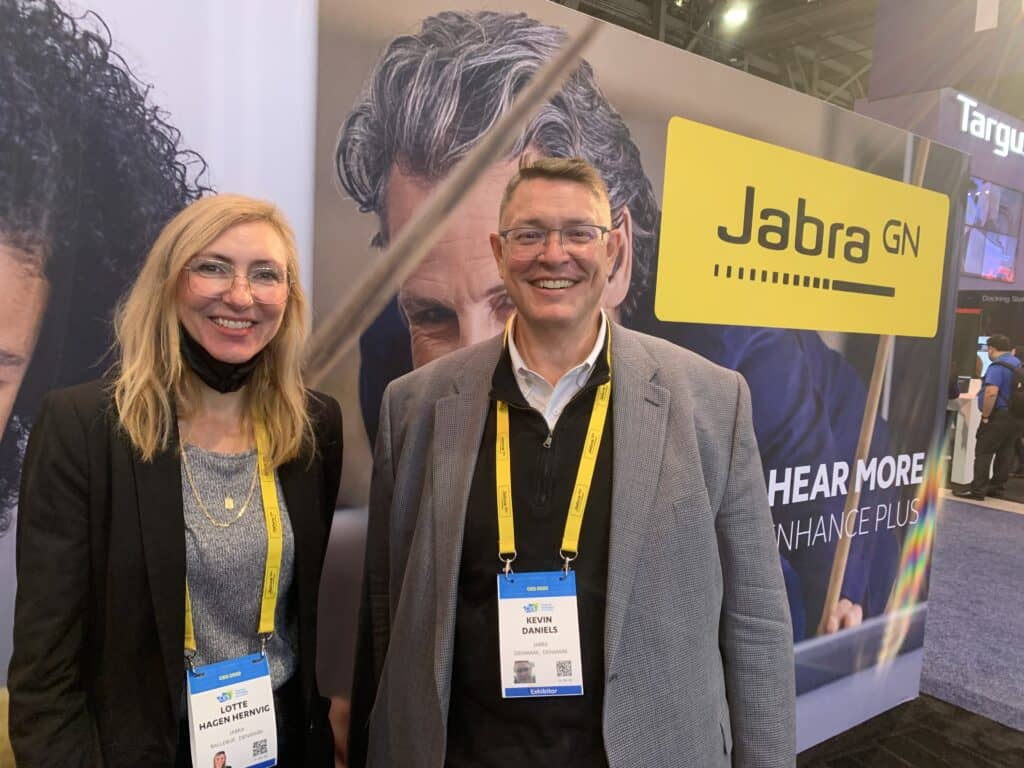Staff Standpoint | February 2022 Hearing Review
By Karl Strom, editor
In January, I attended the Consumer Electronics Show (CES) in Las Vegas, one of the largest conventions in the world. Here are a three observations about CES as it relates to OTC hearing aids.

1) The consumer electronics industry dwarfs the hearing industry. I realize this is not a revelation, but any first-time CES visitor from the hearing care world cannot help but notice the scale of the show compared to the likes of AAA, EUHA, or even the ASHA conventions. In recent months I’ve seen articles suggesting that the hearing industry has a weighty financial influence on policy makers in the regulation of OTC hearing devices. These writers need a reality check—and a visit to CES. There were over 2200 CES exhibitors and some 45,000 attendees (about a third of the usual attendance due to Covid-19). The Samsung booth alone would have consumed about one-quarter of the entire AAA convention show floor. Just a few of the CES categories that pertain to hearing and amplification include Accessibility, Headphones & Personal Audio, Wearable Technologies, Health & Wellness, Home Audio/Video Components, Gaming, Smart Homes, Embedded Technologies, and Virtual & Augmented Reality. Last year, there were around 17 million hearing aids sold worldwide (most in binaural sets), compared to 1.5 billion smart phones, 550 million ear/headphones, and 214 million TVs. Granted, the margins are different for hearing aids which are medical devices. But seriously, who do you think has more monetary influence with Congress and federal policy makers?
Related webinar: Top Audio & Hearing Health Takeaways from CES 2022

2) Earbuds and audio were major themes at CES 2022. Wireless earbuds, and the innovative technologies related to them, were widespread at CES 2022. Apple dominates the earbud market, followed by Jabra, Samsung, JLab, Bose, and many others, and there is also some very interesting hearing-enhancement software for earbuds like Chatable, Absolute Audio Labs, and Jacoti. I went to CES at the invitation of GN for a sneak peek of their Jabra Enhance Plus earbuds—a culmination of technologies from the company’s two divisions, GN Hearing (which includes ReSound and Beltone) and GN Audio (Jabra, VXi, BlueParrot, and the recently acquired SteelSeries). In the December HR, researchers from the National Acoustic Laboratories (NAL) showed how Apple AirPods Pro and its Headphone Accommodations feature can help people with milder hearing losses. Like most Apple devices, they’re impressive. The new Jabra Enhance Plus earbuds—which will be available on February 25 and should be classified as an “OTC hearing aid” when the rules are finalized by the FDA around September—are even more impressive for addressing mild hearing loss. GN has its feet firmly planted in both the medical hearing device and the consumer electronics markets (even before its $1.24 billion purchase of SteelSeries, 65% of GN’s revenues came from outside its Hearing division), so it shouldn’t be surprising it can meld its audio-hearing technologies into an excellent OTC hearing aid.
Related article: GN Launches Jabra Enhance Plus
3) OTC devices and hearing aids are two different markets—both with bright futures. However, I think the OTC and traditional hearing aid markets will remain separate for three key reasons: 1) Consumers will continue to seek professional help because they rightly view hearing loss as a medical condition; 2) Consumer satisfaction with professionally dispensed hearing aids is very high (83%), and patients often opt for higher-tech hearing aids during their second purchase because they’ve come to understand the real value of better hearing; and 3) Several high-quality, affordable, online DIY hearing devices have already been on the market for a number of years, and they have not yet set the world on fire or negatively impacted hearing aid sales.
My opinion is that GN is moving along a path that other hearing aid manufacturers will follow (note that Starkey has previously partnered with Bragi, and Sonova has a global supply agreement with NuHeara). New high-quality OTC solutions—like the current offerings from NuHeara, Lucid, Alango, Lexie, Bose, Eargo, SoundWorld, etc—can demonstrate the life-changing value of quality amplification and speech audibility for people with milder hearing losses. They should also eventually outcompete and doom the cheap rip-offs that constitute so much of the current online “DIY/PSAP” market.
OTC hearing aids are coming in 2022, whether we like it or not. CES 2022 showed there is great innovation and promise in this new class of products and related technology. What we need now is for the FDA to get the OTC regulations right in terms of consumer safety, efficacy, and recourse, while allowing enough wiggle-room for future innovation, affordability, and accessibility. If FDA does get it right (not an easy task), we should see the high-quality self-fitting OTC devices prevail, and disappearing should be those pieces of garbage that give all those recalcitrant 50+ year-olds with hearing loss the trump-card of excuses: “I tried hearing aids and they don’t work.”
About the author: Karl Strom is editor-in-chief and a founding editor of The Hearing Review. He has been reporting on hearing healthcare issues for over 25 years.
Citation for this article: Strom K. CES 2022 and OTC hearing aids. Hearing Review. 2022;29(1):6.






